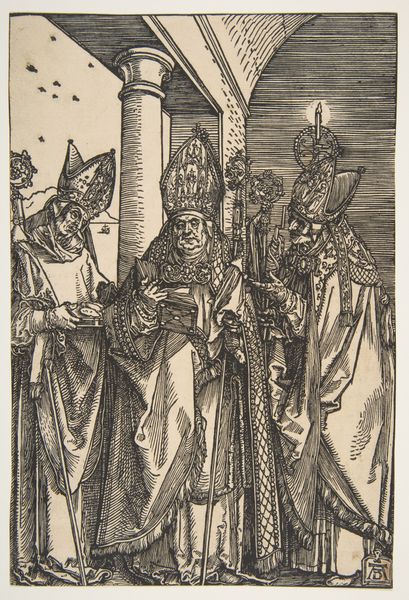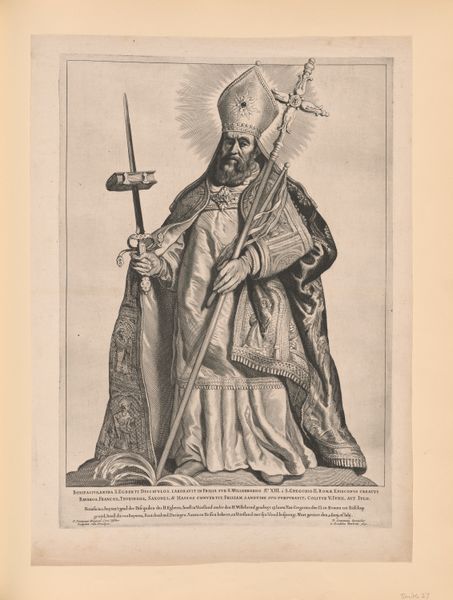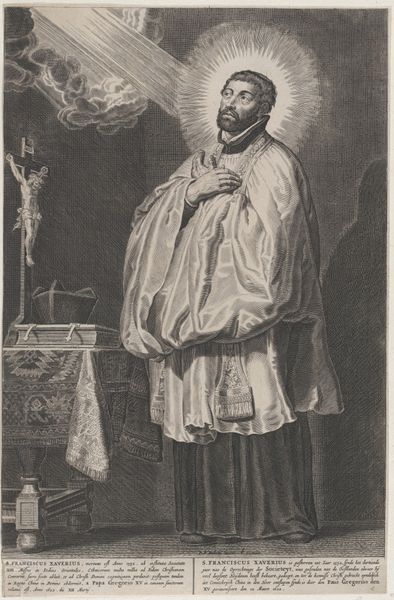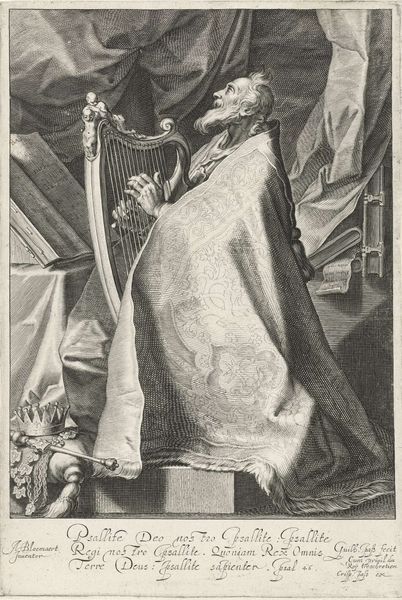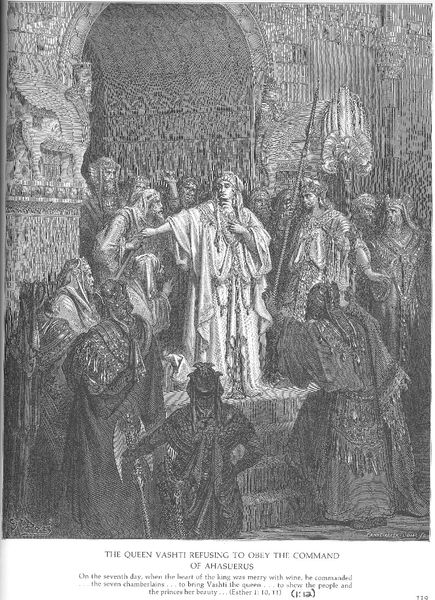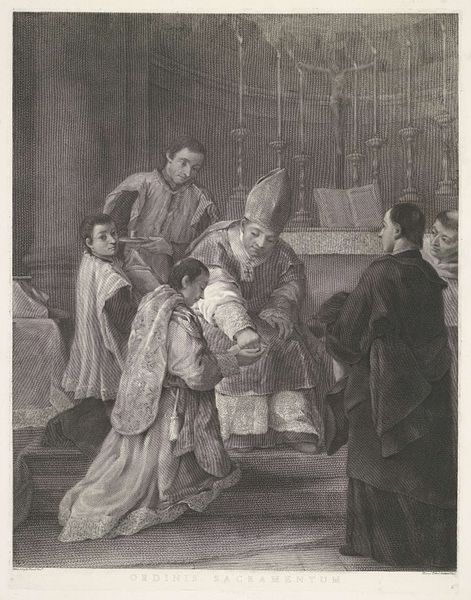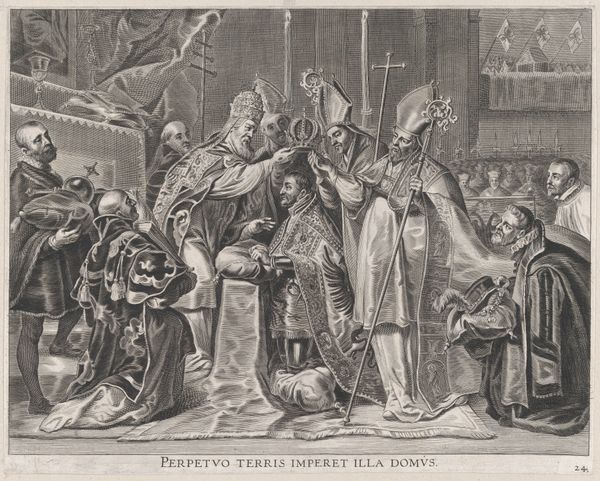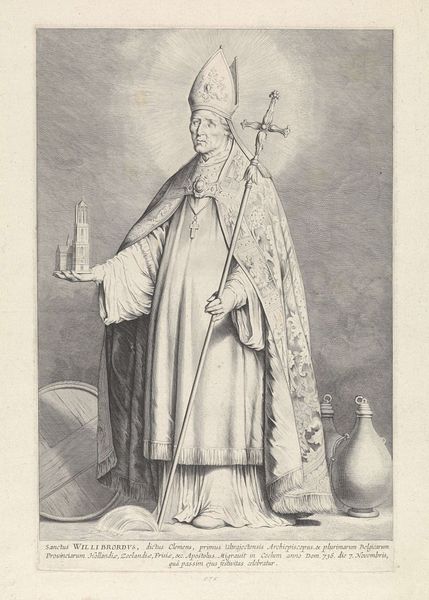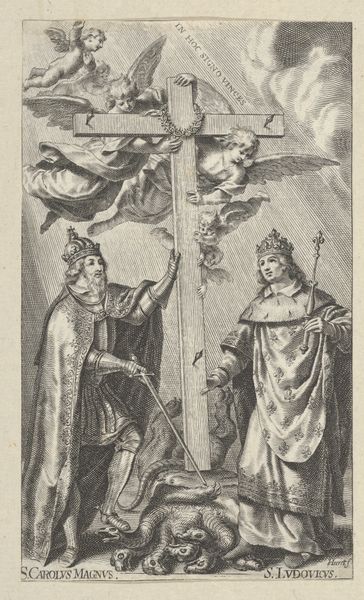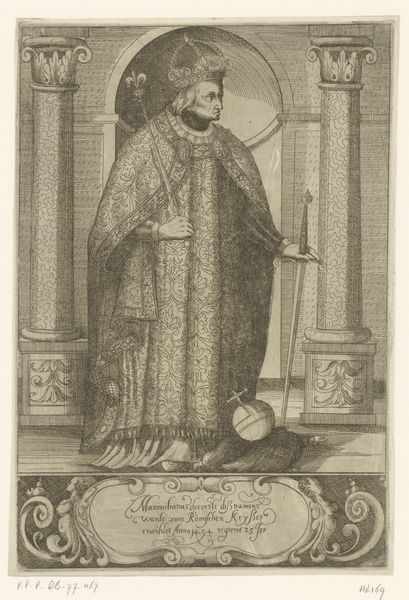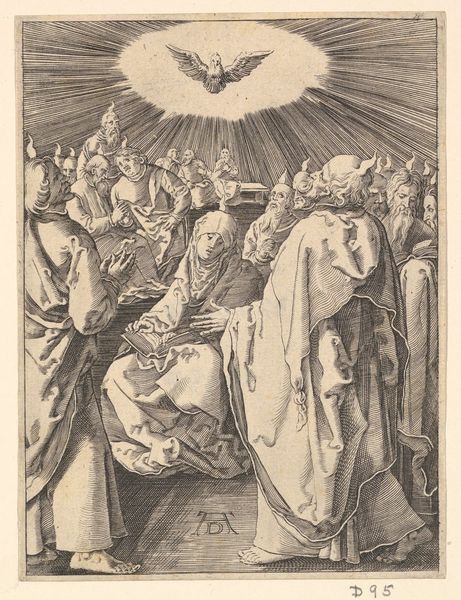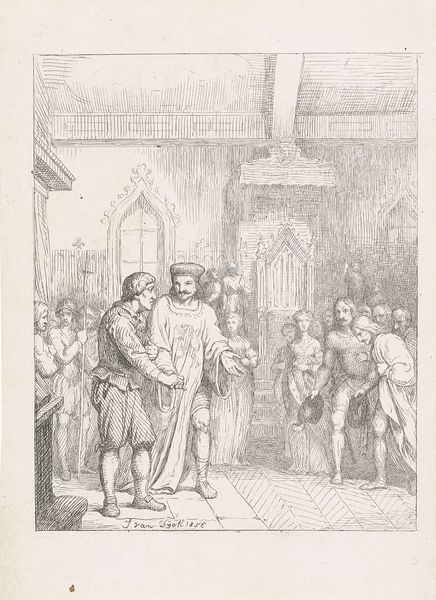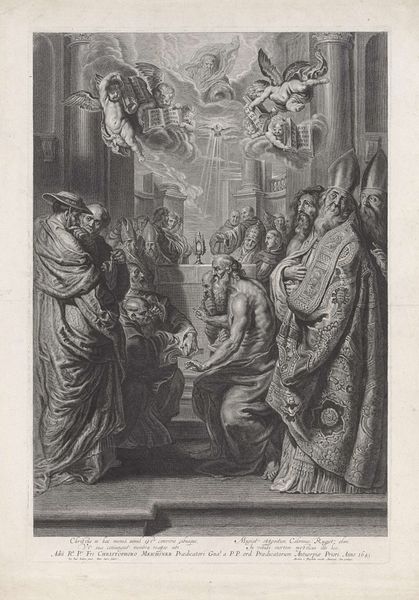
print, engraving
#
medieval
#
narrative-art
# print
#
pencil sketch
#
charcoal drawing
#
figuration
#
group-portraits
#
history-painting
#
engraving
Dimensions: height 156 mm, width 102 mm
Copyright: Rijks Museum: Open Domain
Curator: Here we see a 19th-century engraving entitled "Boudewijn I gekroond tot koning van Jeruzalem, 1100" or Baldwin I crowned King of Jerusalem, 1100. Editor: Immediately, the detail strikes me. The engraver captured the texture of the fabrics so precisely with line and shadow. It's a study in grey scales and depth achieved through meticulous layering. Curator: It's interesting to consider the artist's decision to depict this event, so far removed in time, during the era of burgeoning nationalism. Images of medieval figures reinforced ideals of leadership and national identity. Baldwin represents a specific idea about Christian rule. Editor: Right, it acts like a visual argument. Notice how the Bishop almost merges into Baldwin? The emphasis is on the connection to religious power. It also emphasizes his centrality in the visual field with strong vertical and horizontal lines anchoring him. Curator: The Crown, itself, functions as more than just a symbol of power. It marks him as chosen, as part of a divine order—and the arrangement reminds us that the symbolic link between divine and secular authority stretches over generations, across different temporal realms. It aims at legitimacy. Editor: You can tell they aimed to emphasize this hierarchy in several other interesting ways as well. Like, notice how dark the knights in the left background are—all their features seem consumed by shadow. The work almost feels theatrical. Curator: Precisely. The staging of the coronation itself reflects deeply rooted concepts of legitimacy, divine mandate, and the very nature of leadership. Consider how this echoes other images of coronations throughout European history. It’s a cultural script. Editor: I was first drawn to the meticulous craft and shading and it all serves a purpose to illustrate that continuity and reinforce established power. That realization almost makes the technique seem complicit somehow. Curator: Interesting. I agree. As this work demonstrates, images hold power to shape our understanding of history. We must decode and interpret them. Editor: Agreed. It goes to show how close formal design and symbolic intentions ultimately sit in images like these.
Comments
No comments
Be the first to comment and join the conversation on the ultimate creative platform.
